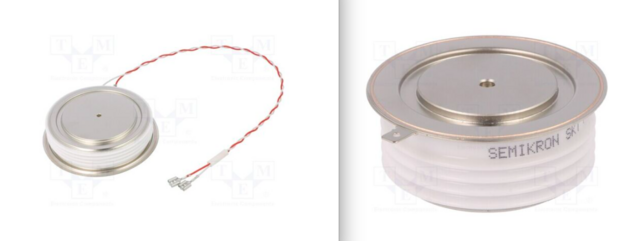SIMILAR IMAGES
IMAGE INFORMATION
EditThyristors are mainly used where high currents and voltages are involved, and are often used to control alternating currents, where the change of polarity of the current causes the device to switch off automatically, referred to as "zero cross" operation.
The first thyristor devices were released commercially in 1956. Because thyristors can control a relatively large amount of power and voltage with a small device, they find wide application in control of electric power, ranging from light dimmers and electric motor speed control to high-voltage direct-current power transmission. Thyristors may be used in power-switching circuits, relay-replacement circuits, inverter circuits, oscillator circuits, level-detector circuits, chopper circuits, light-dimming circuits, low-cost timer circuits, logic circuits, speed-control circuits, phase-control circuits, etc. Originally, thyristors relied only on current reversal to turn them off, making them difficult to apply for direct current; newer device types can be turned on and off through the control gate signal. The latter is known as a gate turn-off thyristor, or GTO thyristor. Unlike transistors, thyristors have a two-valued switching characteristic, meaning that a thyristor can only be fully on or off, while a transistor can lie in between on and off states. This makes a thyristor unsuitable as an analog amplifier, but useful as a switch.
In recent years, some manufacturers have developed thyristors using silicon carbide (SiC) as the semiconductor material. These have applications in high temperature environments, being capable of operating at temperatures up to 350 °C.

